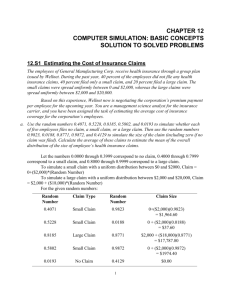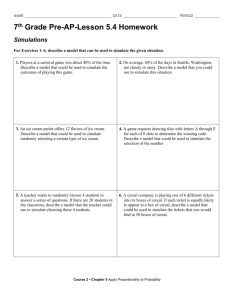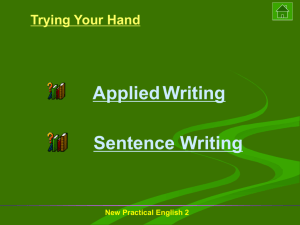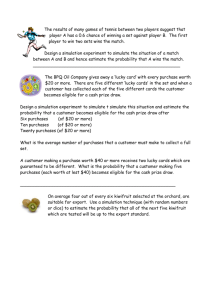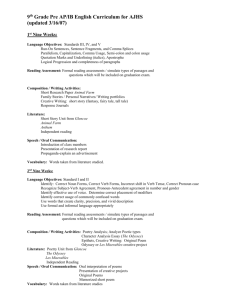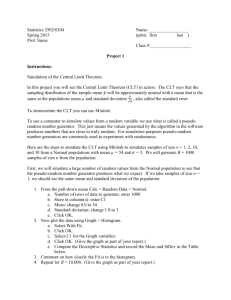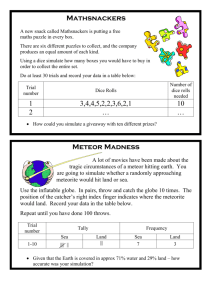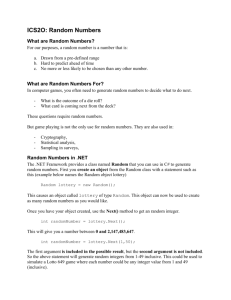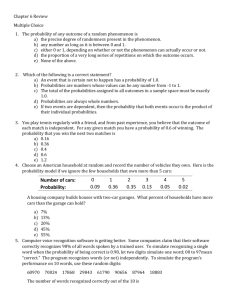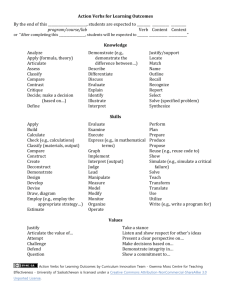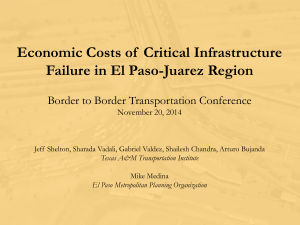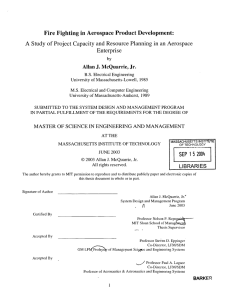CCNProjectList
advertisement
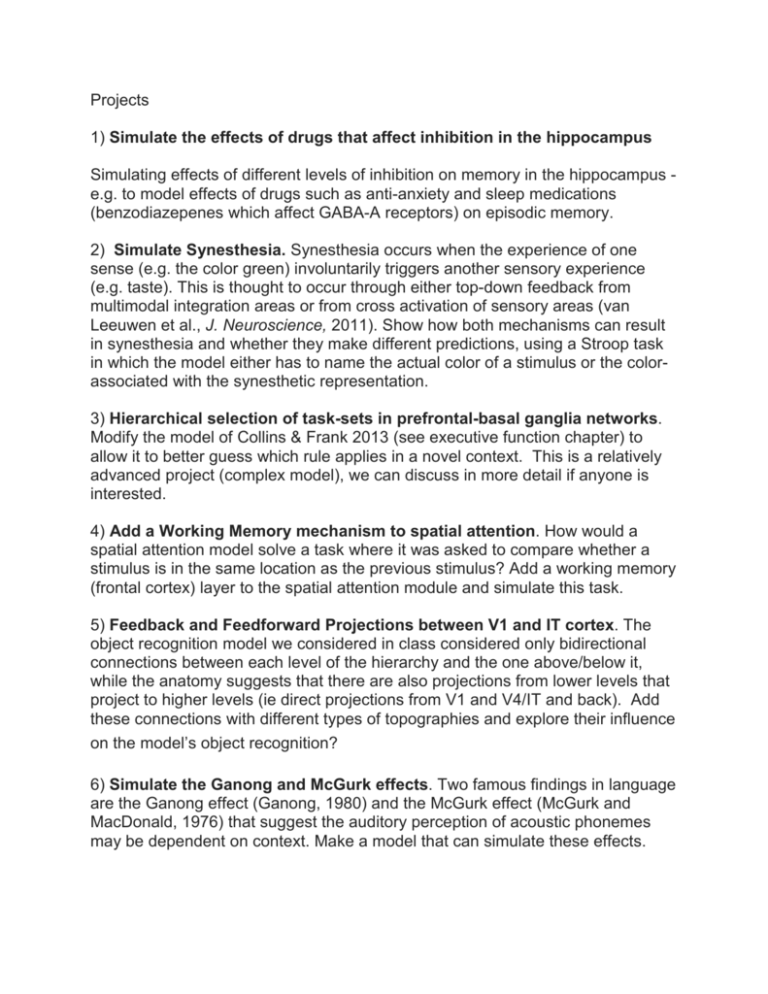
Projects 1) Simulate the effects of drugs that affect inhibition in the hippocampus Simulating effects of different levels of inhibition on memory in the hippocampus e.g. to model effects of drugs such as anti-anxiety and sleep medications (benzodiazepenes which affect GABA-A receptors) on episodic memory. 2) Simulate Synesthesia. Synesthesia occurs when the experience of one sense (e.g. the color green) involuntarily triggers another sensory experience (e.g. taste). This is thought to occur through either top-down feedback from multimodal integration areas or from cross activation of sensory areas (van Leeuwen et al., J. Neuroscience, 2011). Show how both mechanisms can result in synesthesia and whether they make different predictions, using a Stroop task in which the model either has to name the actual color of a stimulus or the colorassociated with the synesthetic representation. 3) Hierarchical selection of task-sets in prefrontal-basal ganglia networks. Modify the model of Collins & Frank 2013 (see executive function chapter) to allow it to better guess which rule applies in a novel context. This is a relatively advanced project (complex model), we can discuss in more detail if anyone is interested. 4) Add a Working Memory mechanism to spatial attention. How would a spatial attention model solve a task where it was asked to compare whether a stimulus is in the same location as the previous stimulus? Add a working memory (frontal cortex) layer to the spatial attention module and simulate this task. 5) Feedback and Feedforward Projections between V1 and IT cortex. The object recognition model we considered in class considered only bidirectional connections between each level of the hierarchy and the one above/below it, while the anatomy suggests that there are also projections from lower levels that project to higher levels (ie direct projections from V1 and V4/IT and back). Add these connections with different types of topographies and explore their influence on the model’s object recognition? 6) Simulate the Ganong and McGurk effects. Two famous findings in language are the Ganong effect (Ganong, 1980) and the McGurk effect (McGurk and MacDonald, 1976) that suggest the auditory perception of acoustic phonemes may be dependent on context. Make a model that can simulate these effects. 7) Simulate the effects of deep brain stimulation (DBS) on Parkinson’s Disease. Parkinson’s disease is marked by a dramatic increase in the oscillatory pattern of the subthalamic nucleus (STN), thought to be the basis of tremor. The STN is also a common target for DBS as a treatment for Parkinson’s disease. Use the basal ganglia model to simulate dopamine depletion in Parkinson’s. Explore the effect of varying the strength of projections between STN and GPe, which form a negative feedback loop that can be unstable and lead to oscillations. Simulate DBS in the STN and examine its effects on STN oscillations and behavior. 8) Simulate the effects of sleep on episodic memory consolidation. REM sleep is important in memory consolidation, a process during which memory is actually improved. One theory of how this occurs is though oscillations of inhibition that have the effect of strengthening weak memories (Norman, Newman & Perotte, Neural Networks, 2005). Simulate these oscillations in a cortical multi-layer model and examine the effects on memory interference. 9) Simulate the effects of Alcohol on the Flanker Task. Alcohol impairs cognitive control but how does this happen? On a flanker task involving response conflict (similar to the Stroop task), alcohol has the effect of increasing reaction times and the number of errors. Simulate these effects. 10) Amnesia and stroke. Damage to the hippocampus and the medial temporal lobe from stroke can cause both anterograde amnesia (the loss of the ability to form new memories) and retrograde amnesia (the loss of previous memories). Simulate stroke damage to hippocampus and dissociate the effects of the two forms of amnesia. 11) Incorporate learning into the spatial attention model and see if you can capture effects in which the Posner effect depends on the frequency of valid vs invalid trials. 12) Specialized processing of faces in the object recognition model. The fusiform face area is a region of visual cortex that is preferentially active for faces. Using face-like stimuli determine if there are properties of a visual model that make it more or less adequate at discriminating faces. 13) Simulate the mere exposure effect on reinforcement learning. Repetitive exposure to a stimulus enhance’s peoples attitude toward an initially neutral stimulus. Amend the temporal differences reinforcement learning model (rl_cond.proj) to simulate this phenomenon by modulationg attention to features of stimuli that reinforce the valuation of preferred attributes.
